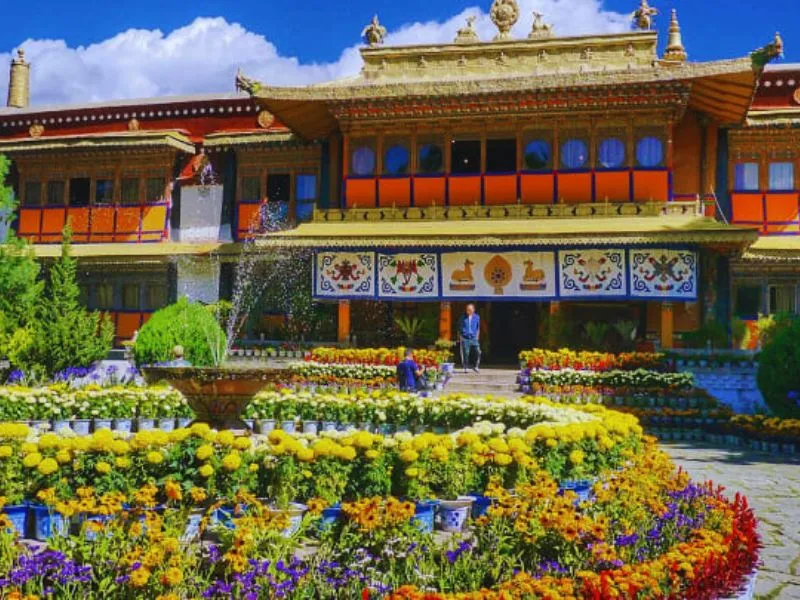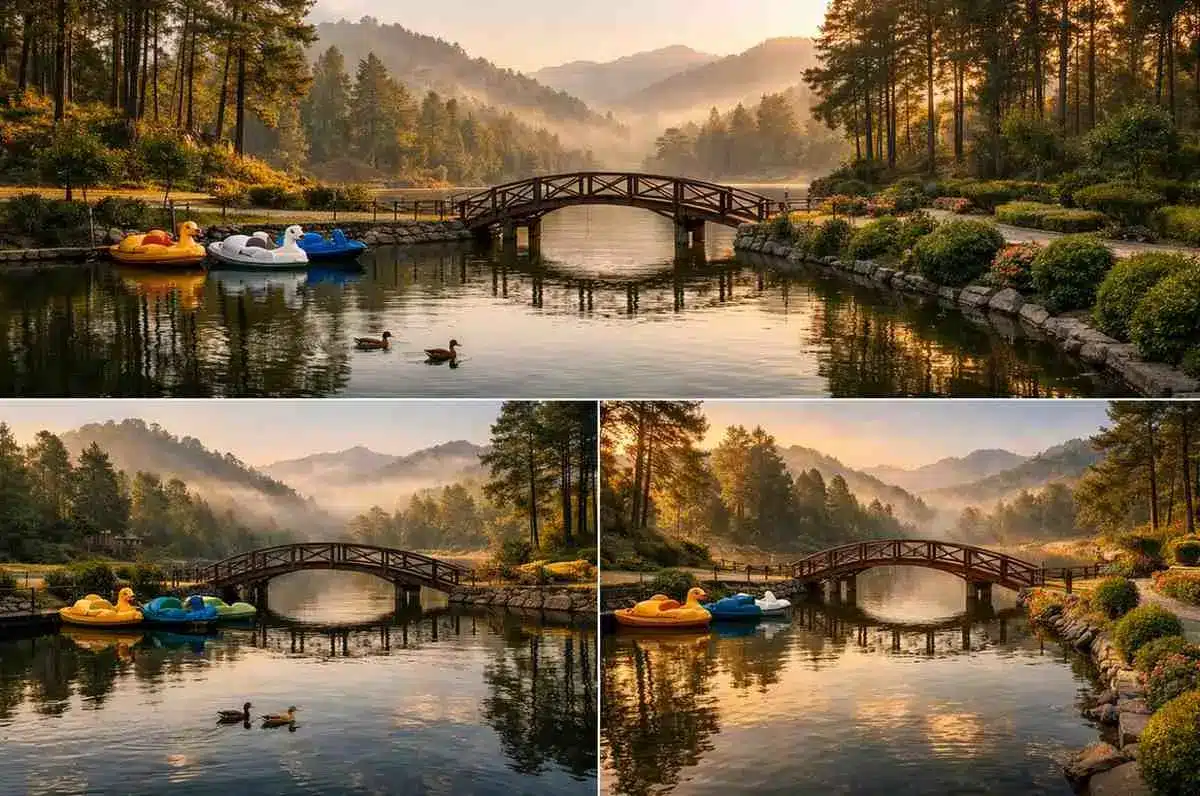The Norbulingka Institute preserves Tibetan culture and art in Dharamshala, India. The institution is a living monument to Tibetan history, protecting centuries-old traditions against political turmoil. Norbulingka inspires future generations by preserving Tibetan creative traditions via handicrafts, cultural education, and community participation.
1. Norbulingka Institute History
Kelsang and Kim Yeshi founded the Norbulingka Institute in 1995 to preserve Tibetan culture in exile. Located amid the lush Himalayan slopes of Sidhpur, Dharamshala, it honors the Dalai Lama’s summer house, Norbulingka Palace in Lhasa. “Norbulingka” means “Jewel Park,” symbolizing the institute’s function as a Tibetan historical sanctuary.
The institution has been a cultural center for Tibetan art preservation artists, researchers, and craftspeople since its foundation. Workshops for Thangka painting, sculpture, woodwork, and educational programs to preserve the Tibetan language and culture are milestones.
2. Norbulingka Institute Vision and Mission
The Norbulingka Institute prioritizes Tibetan art and cultural preservation. The institution educates and guides young Tibetans to preserve their traditions. Among its objectives:
Preserving historic Tibetan art forms including Thangka painting, sculpture, and textiles.
– Cultural education: Teaching local and worldwide Tibetan history, language, and philosophy.
– Community development: Giving artists and craftspeople the tools and platform to succeed.
– Environmental sustainability: The Tibetan idea of harmony with nature is reflected in eco-friendly art and operations.
3. Norbulingka Institute Artistic Traditions and Practices
Traditional Tibetan arts and crafts, which are spiritual and cultural, thrive at Norbulingka Institute. Notable practices include:
Thangka Painting:
Norbulingka focuses on Tibetan Buddhist art on cotton or silk, known as thangka. These beautiful scrolls feature Tibetan Buddhist deities, mandalas, and settings. Thangka-making is both contemplative and creative, taking years of study.

Sculpture:
The institution also promotes Tibetan sculpture, where artists create Buddhas, bodhisattvas, and religious figures. These clay, copper, and bronze sculptures are beautifully crafted, demonstrating passion and expertise.
Woodwork and Carpentry:
Traditional Tibetan woodwork and carpentry flourish in Norbulingka, with artists crafting exquisitely carved furniture, altars, and household goods. These handcrafted pieces emphasize workmanship and sustainability with complex Tibetan Buddhist patterns.
Textiles:
Tibetan textile techniques including weaving and appliqué thrive at the institution. Tibetan artists make gorgeous textiles for ceremonial clothing and home adornment using ancient processes. This preserves historical weaving skills and empowers local craftspeople.
Norbulingka mentors and trains younger Tibetans in exile to maintain and pass on these cultural practices.
4. Norbulingka Institute Programs and Initiatives
Norbulingka provides several Tibetan art and cultural activities for local and international audiences. This includes:
programs and courses: The institution offers hands-on Thangka painting, wood carving, and textile arts programs taught by professional craftsmen.
Regular displays of resident artists’ work reveal Tibetan religious and cultural heritage.
Norbulingka supports local Tibetan communities via educational initiatives and economic possibilities for craftspeople.
Norbulingka shares Tibetan art worldwide via partnerships with other cultural organisations, advancing its cultural preservation aim.
5. Norbulingka Institute Cultural Preservation Efforts
Norbulingka is crucial to Tibetan cultural preservation. Beyond the arts, it explores language, religion, and traditional knowledge. The institution preserves Tibetan writings, manuscripts, and artistic traditions for future generations. Norbulingka also offers Tibetan language lessons to maintain the language.
6. Norbulingka Institute Visitor Experience
Norbulingka Institute visitors receive culture immersion. The institute’s setting outside Dharamshala provides a quiet getaway into Tibetan art and spirituality. Key tourist information:
– Location: Sidhpur, Dharamshala, Himachal Pradesh, India.
– Opening Hours: Open every day from 9:00 AM to 5:30 PM, including Sundays.
– Admission Fees: A small price covers access, with guided tours offered for a closer look at the institution.
– Visitors may enjoy tours of the Norbulingka Museum and see expert craftspeople at work in their workshops.
– Hands-on workshops.
– Wandering the Tibetan-inspired gardens, which allow quiet introspection.
– Talking to artists about their complicated methods.
Also Read: Kinner Kailash: A Spiritual Journey to the Abode of Lord Shiva
7. Norbulingka Institute Future Directions
Norbulingka Institute is strengthening its Tibetan cultural preservation activities in light of modernization and globalization. Upcoming projects include:
– Launching digital archives to share Tibetan art and literature worldwide.
– Expanding sustainability activities using eco-friendly materials and renewable energy.
– Expanding international partnerships to promote Tibetan art worldwide.
The institute’s future goal is to preserve Tibetan art while adapting to contemporary audiences.
8. Conclusion
The Norbulingka Institute offers promise for Tibetan art and culture. Through craftsmanship, education, and community participation, it preserves Tibet’s rich legacy for future generations. Everyone may help preserve this unique cultural resource by visiting the institution, participating in its activities, or supporting its projects.
Frequently Asked Questions (FAQs)
The Norbulingka Institute was formed in 1995 by Kelsang and Kim Yeshi to conserve Tibetan art and culture in exile.
Kelsang and Kim Yeshi founded the Norbulingka Institute with Tibetan backing.
Norbulingka is open every day, including Sundays, from 9:00 AM to 5:30 PM.






